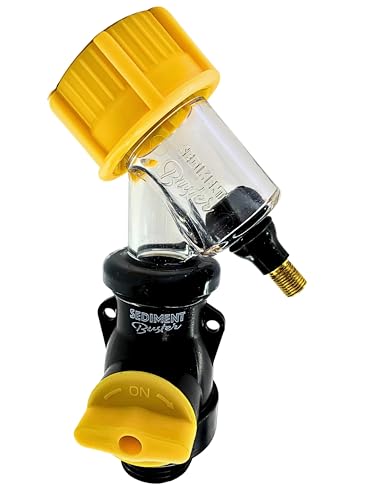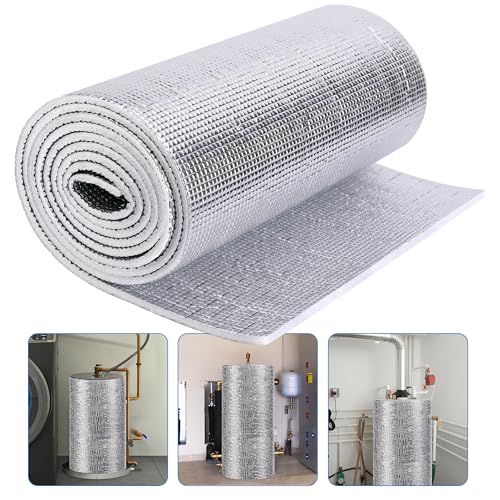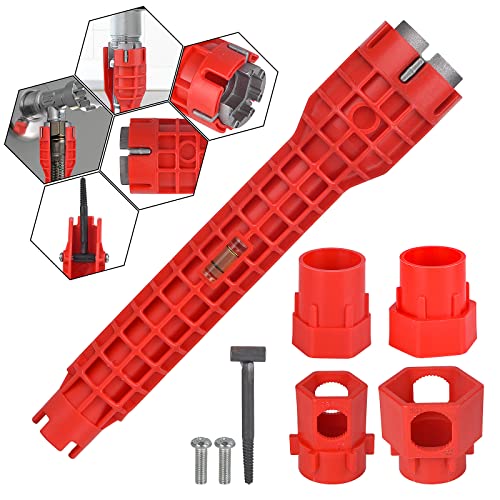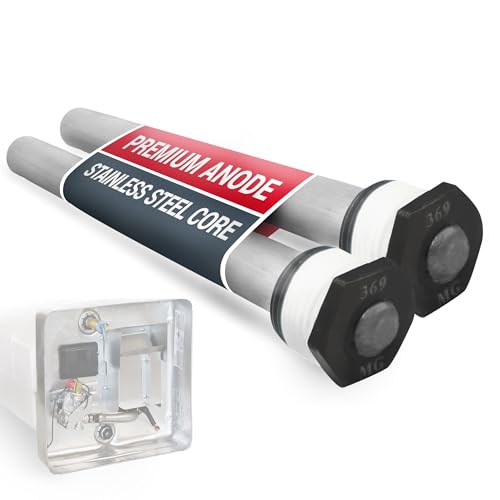It is but WIFI for me in a four level townhome is spotty in certain places. The video surveillance system is much more reliable over Ethernet than it is over WIFI. I should have done this right the first time when the drywall was not up.
You are using an out of date browser. It may not display this or other websites correctly.
You should upgrade or use an alternative browser.
You should upgrade or use an alternative browser.
What did you do today?
- Thread starter Chris
- Start date

Help Support Plumbing Forums:
This site may earn a commission from merchant affiliate
links, including eBay, Amazon, and others.
Have you considered a Netgear Router and Wi-Fi whole house mesh system? I had dead spots before, but now, I get Wi-Fi three houses away. Best $450 I ever spent. They also have an Ethernet plug on the back side of the satellites.
I have the ASUS equivalent with one main router and two satellite wireless routers all connected via Ethernet. In order to get the router in the detached garage connected via Ethernet, I am using a TP-Link Ethernet over the AC line adapter that uses the AC line to deliver the data. That works pretty effectively too. The QNAP network attached storage devices all require hardwired connections so I am pretty much stuck with needing wired connections for them and the surveillance cameras I’ve got.
I purchased the a/c line extender, and it didn't make any difference. I had one of my wi-fi security cameras linked to that a/c extender, and it always failed. I placed a satellite from the mesh system in the bedroom on the far east side of the house, and now it works flawlessly. My other satellite is on the far west wall of my house, and the stationary mesh is in the center of the house. I can now be anywhere on my property and have great coverage.
The AC line extender from TP-Link that I use is not for extending WIFI but actually extending Ethernet. I connect an Ethernet cable into one of the TP-Link devices, plug it into the same physical AC circuit/breaker that the garage is on, plug in the other half of the TP-Link system into the outlet in the garage, and and Ethernet cable from that into one of the ASUS mesh routers feeding the garage. In a 1Gb system I am getting about 0.5Gb connectivity to the garage which is plenty fast enough for surveillance video.
Our modem doesn't have the best signal and it has weaker signal at the back of the house (because of the water heater and furnace blocking things). Eventually we may get a MESH system.
But I like having ethernet cables as an option in case the wireless adapter on a computer goes out or has issues. I still keep a landline because my cell signal sucks out here despite having a signal booster.
Can't remember if I mentioned that the other day I started cleaning in the living room but got dizzy and somewhat nauseous and had to lie down. Slept most of the rest of the day and still felt like garbage later.
Took my brother to his doctor's appointment yesterday. His blood sugar was high and A1C is high so he needs to cut the sugars. One of the diabetes meds he needs has been sitting in limbo over 6 months with his insurance neither approving nor denying it. Doctor said he'd re-send the request and suggested talking to Joe (absolutely fantastic pharmacist) to find out what sort of blood sugar monitors will be covered by his insurance.
I showed him how far I could (and could not) lift my arm and he said to schedule an appointment and that I will probably need physical therapy).
I looked up ACA plans in my state and premiums are over $500/mo with over $9k deductibles. Not worth it. I did see another plan for like $181/mo and $10k deductible. It's an indemnity type. My main goal would be to have them negotiate prices down (if they do that) bc they charge uninsured people more than insured people. A $120 visit for Mom to the same hospital the same time/day and same treatment was $900 for me. She had zero out-of-pocket and they only charged her insurance the $120.
More drama with my friends going on and one of the exes tried to drag me into it and is now badmouthing me to people. His loss. Now he won't get free painting service. He thinks he's going to somehow win his ex back but he's only making her hate him more.
Gonna help my friend add a hallway to the house so people don't have to go through his daughter's bedroom to reach the bathroom. He's going to use 2x4s from demo-ing the guest bathroom here. I'm going to help with drywalling and painting if I can. I need to learn how to put up drywall and do the mud taping stuff. I have a drywall sanding attachment and a shopvac to help. I can only use one arm but fortunately, its my main one.
After the doctor's appointment we stopped by Walmart and grabbed some stuff. I decided to grab a cheap plastic drawer set to help Mom organize her junk in the living room. I cleared a spot for it, swept the floor (should have remembered my handheld carpet vac but forgot) and set it in place. She's filled the bottom two drawers. She thanked me for it so it seems she's happy. I hope she will clear off more stuff from her desk so I can clean her desk more thoroughly. I really want her to get a new desk bc that one is falling apart. Had it about 20 years already- if not longer. Particle board crappy thing too.
I'm also thinking about what I'm going to do for the pump house. I want to use a water heater stand for the pressure tank, a plant stand for the jet pump, pex as a bridge, more stainless steel fittings, etc. I think I can get 10' of 1" PEX-B at one of the big box stores. I want to reduce the leaks in there. No pex on suction side of the jet pump to avoid collapse. Tried the braided steel flex tubing and it didn't work.
On the upside, when we were leaving for the doctor's appointment, I grabbed a trash bag to haul out and my brother actually grabbed two more (since he saw I was taking trash out- which he's supposed to do and hasn't done in several months).
I'm about to eat something while watching DVR of Antiques Roadshow and clean up in the living room some more. Have to clean up cat crap in the hallway. Some kitty kitty keeps crapping in front of Mom's bedroom door instead of in the litterbox.
But I like having ethernet cables as an option in case the wireless adapter on a computer goes out or has issues. I still keep a landline because my cell signal sucks out here despite having a signal booster.
Can't remember if I mentioned that the other day I started cleaning in the living room but got dizzy and somewhat nauseous and had to lie down. Slept most of the rest of the day and still felt like garbage later.
Took my brother to his doctor's appointment yesterday. His blood sugar was high and A1C is high so he needs to cut the sugars. One of the diabetes meds he needs has been sitting in limbo over 6 months with his insurance neither approving nor denying it. Doctor said he'd re-send the request and suggested talking to Joe (absolutely fantastic pharmacist) to find out what sort of blood sugar monitors will be covered by his insurance.
I showed him how far I could (and could not) lift my arm and he said to schedule an appointment and that I will probably need physical therapy).
I looked up ACA plans in my state and premiums are over $500/mo with over $9k deductibles. Not worth it. I did see another plan for like $181/mo and $10k deductible. It's an indemnity type. My main goal would be to have them negotiate prices down (if they do that) bc they charge uninsured people more than insured people. A $120 visit for Mom to the same hospital the same time/day and same treatment was $900 for me. She had zero out-of-pocket and they only charged her insurance the $120.
More drama with my friends going on and one of the exes tried to drag me into it and is now badmouthing me to people. His loss. Now he won't get free painting service. He thinks he's going to somehow win his ex back but he's only making her hate him more.
Gonna help my friend add a hallway to the house so people don't have to go through his daughter's bedroom to reach the bathroom. He's going to use 2x4s from demo-ing the guest bathroom here. I'm going to help with drywalling and painting if I can. I need to learn how to put up drywall and do the mud taping stuff. I have a drywall sanding attachment and a shopvac to help. I can only use one arm but fortunately, its my main one.
After the doctor's appointment we stopped by Walmart and grabbed some stuff. I decided to grab a cheap plastic drawer set to help Mom organize her junk in the living room. I cleared a spot for it, swept the floor (should have remembered my handheld carpet vac but forgot) and set it in place. She's filled the bottom two drawers. She thanked me for it so it seems she's happy. I hope she will clear off more stuff from her desk so I can clean her desk more thoroughly. I really want her to get a new desk bc that one is falling apart. Had it about 20 years already- if not longer. Particle board crappy thing too.
I'm also thinking about what I'm going to do for the pump house. I want to use a water heater stand for the pressure tank, a plant stand for the jet pump, pex as a bridge, more stainless steel fittings, etc. I think I can get 10' of 1" PEX-B at one of the big box stores. I want to reduce the leaks in there. No pex on suction side of the jet pump to avoid collapse. Tried the braided steel flex tubing and it didn't work.
On the upside, when we were leaving for the doctor's appointment, I grabbed a trash bag to haul out and my brother actually grabbed two more (since he saw I was taking trash out- which he's supposed to do and hasn't done in several months).
I'm about to eat something while watching DVR of Antiques Roadshow and clean up in the living room some more. Have to clean up cat crap in the hallway. Some kitty kitty keeps crapping in front of Mom's bedroom door instead of in the litterbox.

$24.79 ($6.20 / Count)
$31.99 ($8.00 / Count)
1 Micron 2.5" x 10" Whole House CTO Carbon Water Filter Cartridge Replacement for Under Sink Water Filter System, Dupont WFPFC8002, WFPFC9001, FXWTC, SCWH-5, WHEF-WHWC, WHCF-WHWC, AMZN-SCWH-5, 4Pack
PUREPLUS FILTERS

$27.19
$32.15
RIDGID 57003 EZ Change Plumbing Wrench Faucet Installation and Removal Tool
Amazon.com

$42.56
$49.60
RIDGID 29983 Model 223S 1/4" to 1-1/4" Inner/Outer Copper and Stainless Steel Tubing and Pipe Reamer, Small
Amazon.com

$45.56
$69.99
Rain Bird LNDDRIPKIT Drip Irrigation Landscape/Garden Watering Kit with Drippers, Micro-Bubblers, Micro-Sprays
Amazon.com
The A/C line extenders must be on the same side of the 110 circuit, and cannot go through any transformers or power strips. They also some in different speeds, depending on your needs. For example, the king of a/c line extenders is TP-Link and they make models in the 4 series, 7 series, and 9 series. They also come with ac power outlets as pass through, or not; with one or more ethernet ports. See here for an explanation: What is Powerline? | Powerline Adapter | TP-LinkI purchased the a/c line extender, and it didn't make any difference. I had one of my wi-fi security cameras linked to that a/c extender, and it always failed. I placed a satellite from the mesh system in the bedroom on the far east side of the house, and now it works flawlessly. My other satellite is on the far west wall of my house, and the stationary mesh is in the center of the house. I can now be anywhere on my property and have great coverage.
I've used these repeatedly throughout my home to extend a "hard wire" ethernet connection from my router to my daughter's work computer (which requires a hard wire connection, won't work with wifi for security reasons as she's in financial services) and also to our television. I've generally bought older models on eBay for cheap and they've all been fine and work well provided you follow the rules.
The mesh networks are great; I have one here called the Asus Zen. But think about it; for the mesh to be extended each node must get a great signal from the base. If that were so easy, then your device would be able to do the same! Therefore I sought out what is called a tri-band mesh, where one band is used exclusively for "backhaul". (look it up!). You can also use a hardwire for backhaul.
As an experiment (it failed) last year, when they were on sale, I bought a three node Google Mesh system. Unfortunately it didn't work with all the devices I have in my home. Certain "internet of things" devices I have such as thermostats, the refrigerator, etc. had trouble seeing and connecting to it. The bigger problem was my commercial size printer which requires a hard-wire connection, not wifi, and moreover, needs to go "out to the cloud" each time it's used to get an IP address. The Google Mesh system has a built in firewall that prevented the printer from doing that and there was no way around it. Back to Costco it went.
But for @BlueSkyHigh with a 4-level townhouse, one wifi router isn't going to cut it. The way wifi signals propagate they really don't like going up or down as much as out...a multi-node (probably one for each level) mesh is probably the answer!
Right. Which means if you are doing such low voltage wiring in new construction (or even retrofitting if you like snaking through walls) best to consider ONLY CAT6e...for someday that too will be superseded by something else fully approved and accepted. Right now that's the standard.Yep, it allows for faster and more reliable data transfer over greater distances.
Excellent point. I also never heard of 6e until now and have worked with 5e, 6, and 6a before but never any shielded cable or connectors. I wonder if my crimping tool would accept 6a shielded connectors and .
I think they already have Cat7e cables. (I just googled it bc I was sure I'd seen they have them). They are higher frequency than cat6 and support networks with greater than 1Gbps data transfer.
Today I picked up mail. My shoulder exercise pulley thing came in and my shoulder support pillow did as well. Used the pillow in the store to keep my arm from aching. The rope & pulley thing is kinda weak and didn't pull as much as I needed it to. I may have to get a doctor to manually free up my shoulder, but I did get it stretched up more than it was going before. Won't do it without the pulley though. Muscle keeps spasming and refusing to cooperate. My bicep and deltoid hate me.
Ordered a loft bed for friend's daughter (it was on sale) and then ordered a mattress bc hers got ruined by her incontinent not-so-great grandfather. He didn't use his mattress pad and didn't wear his diapers so he soaked all the way through to the boxspring. Refused to pay for a new mattress bc he's a jerk. he also had the audacity to demand my friend give him the $ the insurance company paid my friend to let him stay there. It did not cover the cost of a new mattress.
Been discussing renos of both of our houses with friend and figuring out what needs to be done. He's adding a hallway (that used to be there originally but was removed at some point). I suggested tearing out the nasty carpet and putting in cheap waterproof vinyl plank. Then he can put an area rug in if need be.
The bed I ordered is "natural wood". I think it's probably some sort of pressboard but am not sure. Probably very soft wood if it is real wood. It can be reinforced and modified though. The kid sleeps on the couch a lot so hopefully the mattress will be comfortable for her. I didn't care about mattress softness/comfort until I was in my 20s. I spent about a year or two sleeping on a futon on the floor in my teens. Couldn't do that nowadays. Bed should be arriving by Monday and when the kid says what color she wants, I can paint it for her.
She probably won't care about her room being smaller so long as she has her own room and some privacy.
Today I picked up mail. My shoulder exercise pulley thing came in and my shoulder support pillow did as well. Used the pillow in the store to keep my arm from aching. The rope & pulley thing is kinda weak and didn't pull as much as I needed it to. I may have to get a doctor to manually free up my shoulder, but I did get it stretched up more than it was going before. Won't do it without the pulley though. Muscle keeps spasming and refusing to cooperate. My bicep and deltoid hate me.
Ordered a loft bed for friend's daughter (it was on sale) and then ordered a mattress bc hers got ruined by her incontinent not-so-great grandfather. He didn't use his mattress pad and didn't wear his diapers so he soaked all the way through to the boxspring. Refused to pay for a new mattress bc he's a jerk. he also had the audacity to demand my friend give him the $ the insurance company paid my friend to let him stay there. It did not cover the cost of a new mattress.
Been discussing renos of both of our houses with friend and figuring out what needs to be done. He's adding a hallway (that used to be there originally but was removed at some point). I suggested tearing out the nasty carpet and putting in cheap waterproof vinyl plank. Then he can put an area rug in if need be.
The bed I ordered is "natural wood". I think it's probably some sort of pressboard but am not sure. Probably very soft wood if it is real wood. It can be reinforced and modified though. The kid sleeps on the couch a lot so hopefully the mattress will be comfortable for her. I didn't care about mattress softness/comfort until I was in my 20s. I spent about a year or two sleeping on a futon on the floor in my teens. Couldn't do that nowadays. Bed should be arriving by Monday and when the kid says what color she wants, I can paint it for her.
She probably won't care about her room being smaller so long as she has her own room and some privacy.
Spent the day musing at the fact that we have two, TWO, special counsels up and running at the same time for the same reason! That and one of my toilets is screaming for attention. A very strong G&T and I am off….
I had a similar experience and I was told by the manufacturer that saw dust is natural wood. I returned the item and will always read the fine print when buying furniture in the future.The bed I ordered is "natural wood". I think it's probably some sort of pressboard but am not sure. Probably very soft wood if it is real wood.
Better left unsaid.
Last edited:
Don’t think we need CAT7 cables quite yet…
https://www.cablematters.com/Blog/Networking/what-is-cat7-and-why-you-don-t-need-it
https://www.cablematters.com/Blog/Networking/what-is-cat7-and-why-you-don-t-need-it
I agree but, that being said, I’ve got fiber running between my two switches and NAS systems and a couple of my computers.Don’t think we need CAT7 cables quite yet…
If I used the cables, I'd probably get cat7 just to be ready for future upgrades.
So far I haven't done much but take my vitamins and allergy meds. My new shoulder support pillow helped me sleep better last night. Its chilly this morning so my cats are piling on. Itsy likes the new comforter I got. Biscuits is on a fuzzy blanket, and Mewlatto is curled up on some clean laundry.
My friend got engaged to his new gf yesterday. I know it seems soon, but they have been friends for 9 years. He didn't even get to ask though, his 10-yr-old daughter jumped in and asked for him. LOL. I do think its a bit premature & that my friend is doing this out of fear she'll leave him and go back to her ex. He knows intellectually she won't bc the ex has burned his bridges, but emotionally he's afraid. But, she was engaged to her ex for years. I'm very happy for them.
So far I haven't done much but take my vitamins and allergy meds. My new shoulder support pillow helped me sleep better last night. Its chilly this morning so my cats are piling on. Itsy likes the new comforter I got. Biscuits is on a fuzzy blanket, and Mewlatto is curled up on some clean laundry.
My friend got engaged to his new gf yesterday. I know it seems soon, but they have been friends for 9 years. He didn't even get to ask though, his 10-yr-old daughter jumped in and asked for him. LOL. I do think its a bit premature & that my friend is doing this out of fear she'll leave him and go back to her ex. He knows intellectually she won't bc the ex has burned his bridges, but emotionally he's afraid. But, she was engaged to her ex for years. I'm very happy for them.
I’m recessing an area above a fireplace for a client, creating somewhat of an alcove to mount the television. Cables all recessed and remoted. Almost done. Yes it’s a ventless gas fireplace.
Attachments
Very nice. I've got the same arrangement and, because I don't want to cook the television, I never use the fireplace due to the heat that it puts out. My TV is not in an alcove, however, and that may help with the heat issue.
A large, thick, wide mantle will solve the heat issue. In my prior home in Michigan I built a mantle about 60” wide, 10” deep and 1.5” thick out of hickory wood. When the fireplace was on for extended periods the underside of the mantle was over 100 degrees while the topside was room temperature. 
Attachments
Two thumbs enthusiastically way up!A large, thick, wide mantle will solve the heat issue. In my prior home in Michigan I built a mantle about 60” wide, 10” deep and 1.5” thick out of hickory wood. When the fireplace was on for extended periods the underside of the mantle was over 100 degrees while the topside was room temperature.
Latest posts
-
-
New to plumbing, New on here. I hope you’re able to help :)
- Latest: Blackbirdie
-
-
-
-
Tankless Water Heater not delivering hot water to showers
- Latest: GReynolds929
-

















































